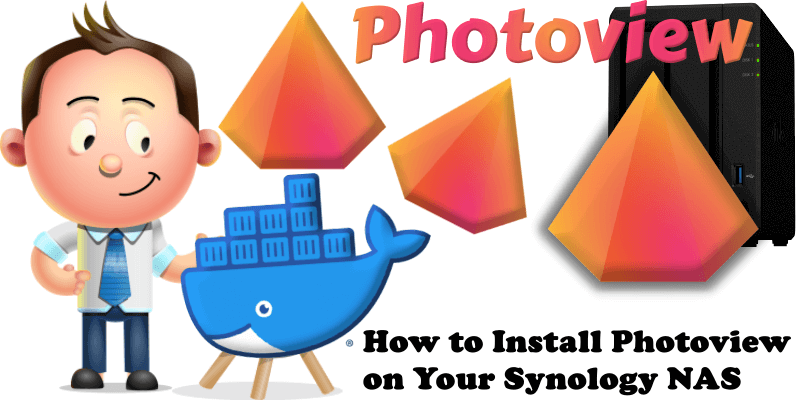
Photoview is a simple and user-friendly photo and video gallery that’s made for photographers and aims to provide an easy and fast way to navigate directories with thousands of high-resolution photos. The scanner automatically picks up your media and starts to generate thumbnail images to make browsing super fast. After your media has been scanned, they show up on the website, organized in the same way as on the filesystem. In this step by step guide I will show you how to Install Photoview on your Synology NAS with Docker & Portainer.
STEP 1
Please Support My work by Making a Donation.
STEP 2
Install Portainer using my step by step guide. If you already have Portainer installed on your Synology NAS, skip this STEP. Attention: Make sure you have installed the latest Portainer version.
STEP 3
Go to File Station and open the docker folder. Inside the docker folder, create one new folder and name it photoview. Follow the instructions in the image below.
Note: Be careful to enter only lowercase, not uppercase letters.
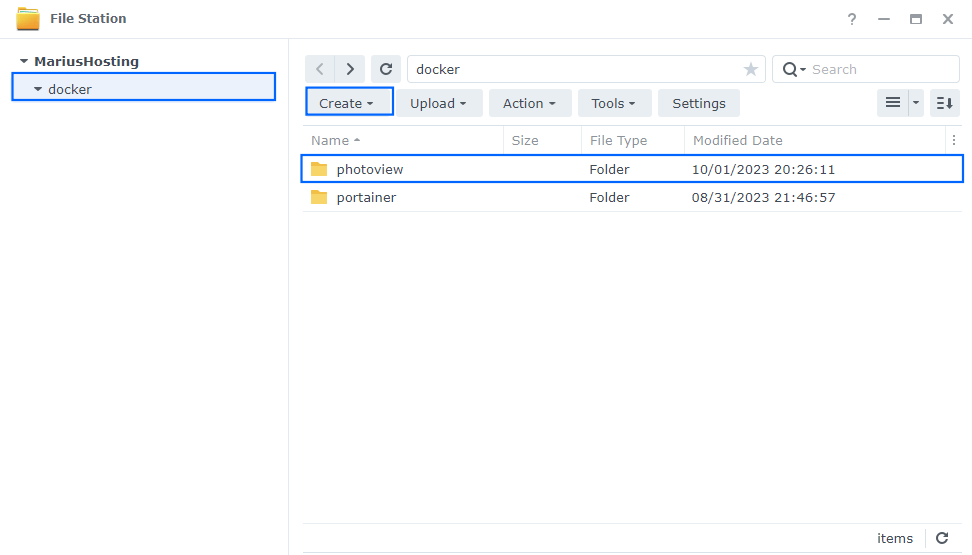
STEP 4
Now create three new folder inside the photoview folder that you created at STEP 3 and name it cache, db, photos. Follow the instructions in the image below.
Note: Be careful to enter only lowercase, not uppercase letters.
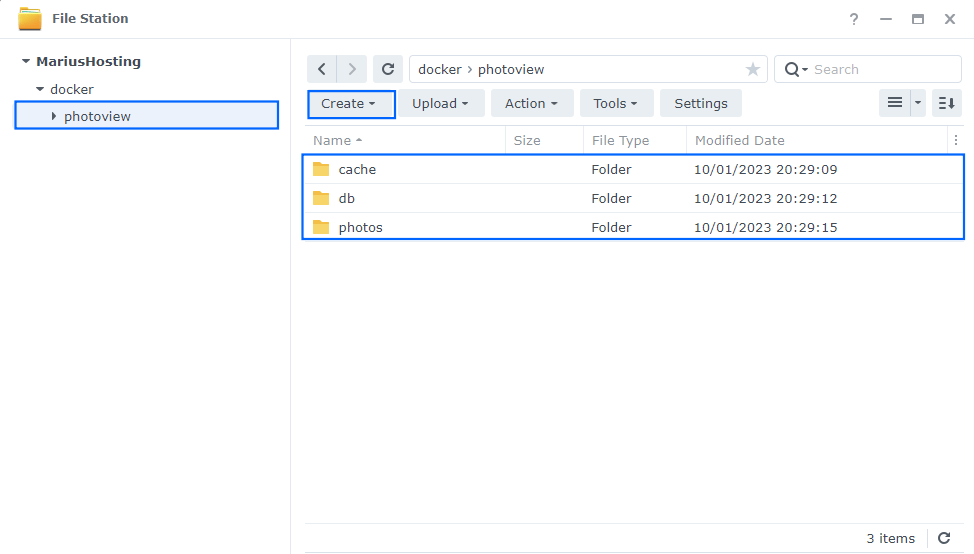
STEP 5
Populate your photos folder with your own photos and videos. Follow the instructions in the image below.
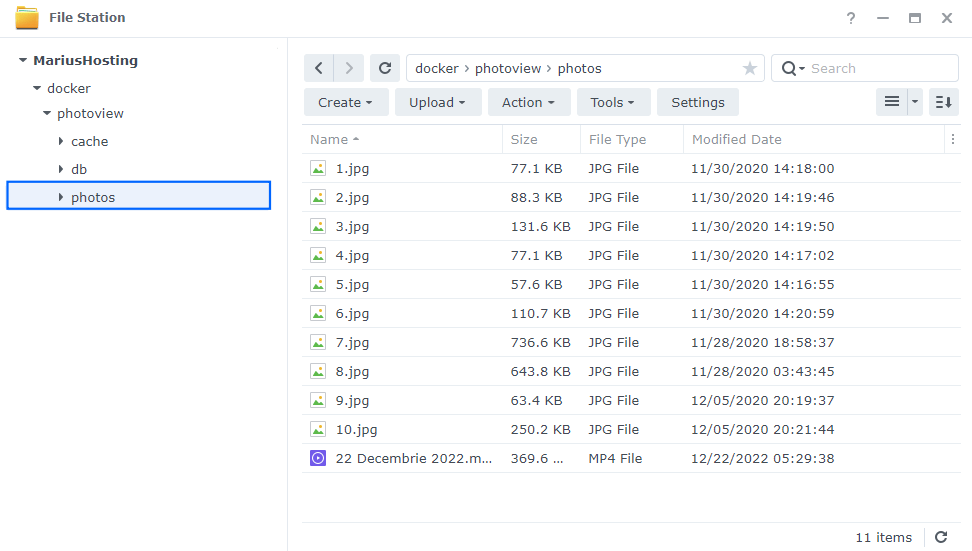
STEP 6
Log into Portainer using your username and password. On the left sidebar in Portainer, click on Stacks then + Add stack. Follow the instructions in the image below.

STEP 7
In the Name field type in photoview. Follow the instructions in the image below.
version: "3.9"
services:
db:
image: postgres:16
container_name: Photoview-DB
hostname: photoview-db
mem_limit: 512m
cpu_shares: 768
security_opt:
- no-new-privileges:true
healthcheck:
test: ["CMD", "pg_isready", "-q", "-d", "photoview", "-U", "photoviewuser"]
timeout: 45s
interval: 10s
retries: 10
volumes:
- /volume1/docker/photoview/db:/var/lib/postgresql/data:rw
environment:
POSTGRES_DB: photoview
POSTGRES_USER: photoviewuser
POSTGRES_PASSWORD: photoviewpass
restart: on-failure:5
photoview:
image: viktorstrate/photoview:2.4.0
container_name: Photoview
hostname: photoview
mem_limit: 2g
cpu_shares: 1024
security_opt:
- no-new-privileges:false
read_only: false
user: 1026:100
healthcheck:
test: curl -f http://localhost:4000/ || exit 1
ports:
- 7354:4000
volumes:
- /volume1/docker/photoview/cache:/app/cache:rw
- /volume1/docker/photoview/photos:/photos:ro
#- /path_to_photos:/photos2:ro
environment:
PHOTOVIEW_DATABASE_DRIVER: postgres
PHOTOVIEW_POSTGRES_URL: postgresql://photoviewuser:photoviewpass@photoview-db:5432/photoview
PHOTOVIEW_LISTEN_PORT: 4000
PHOTOVIEW_MEDIA_CACHE: /app/cache
restart: on-failure:5
depends_on:
db:
condition: service_healthy
Note: Before you paste the code above in the Web editor area below, change the value numbers for user with your own UID and GID values. (Follow my step by step guide on how to do this.) 1026 is my personal UID value and 100 is my personal GID value. You have to type in your own values.
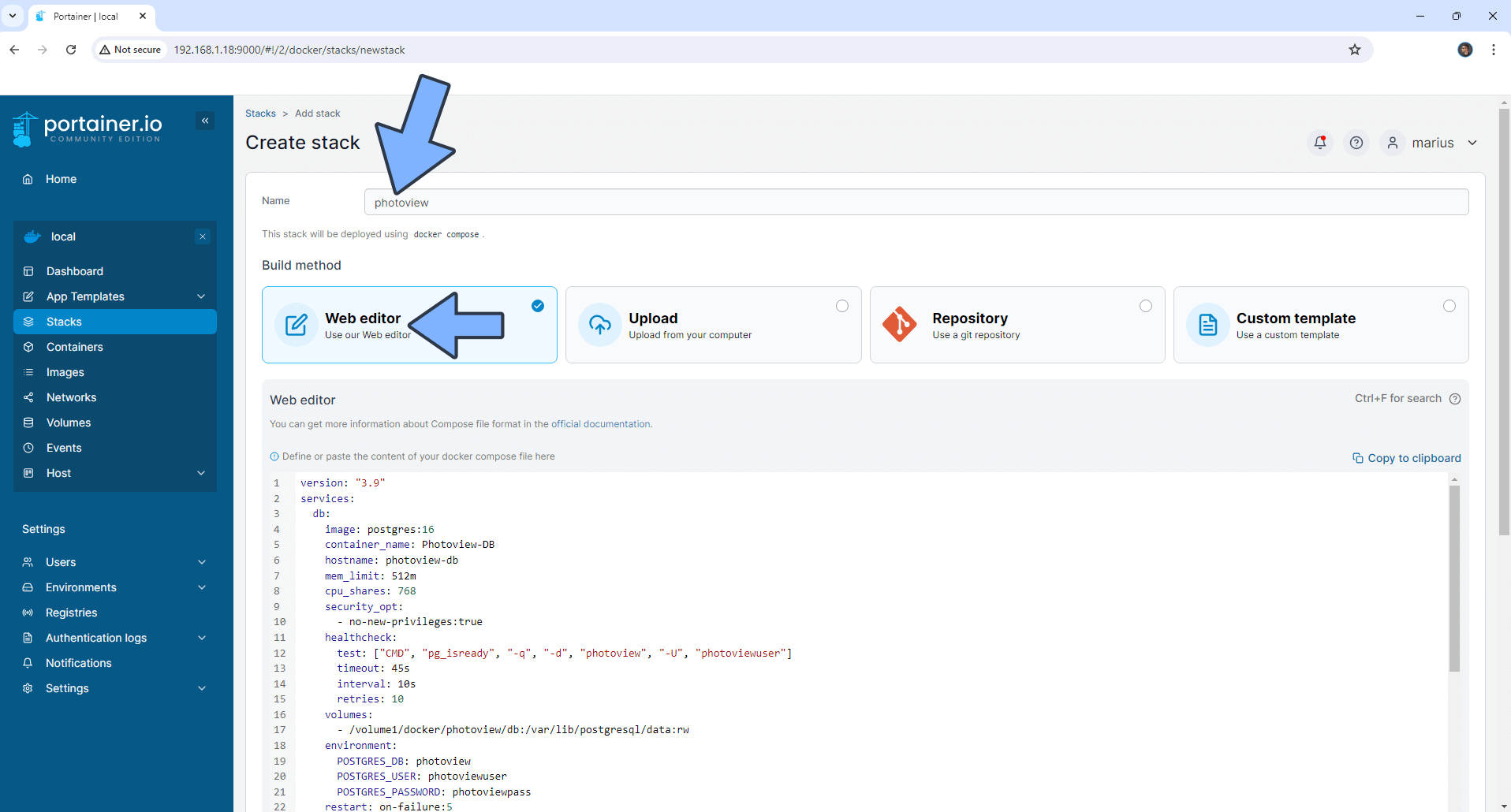
STEP 8
Scroll down on the page until you see a button named Deploy the stack. Click on it. Follow the instructions in the image below. The installation process can take up to a few minutes. It will depend on your Internet speed connection.

STEP 9
If everything goes right, you will see the following message at the top right of your screen: “Success Stack successfully deployed“.
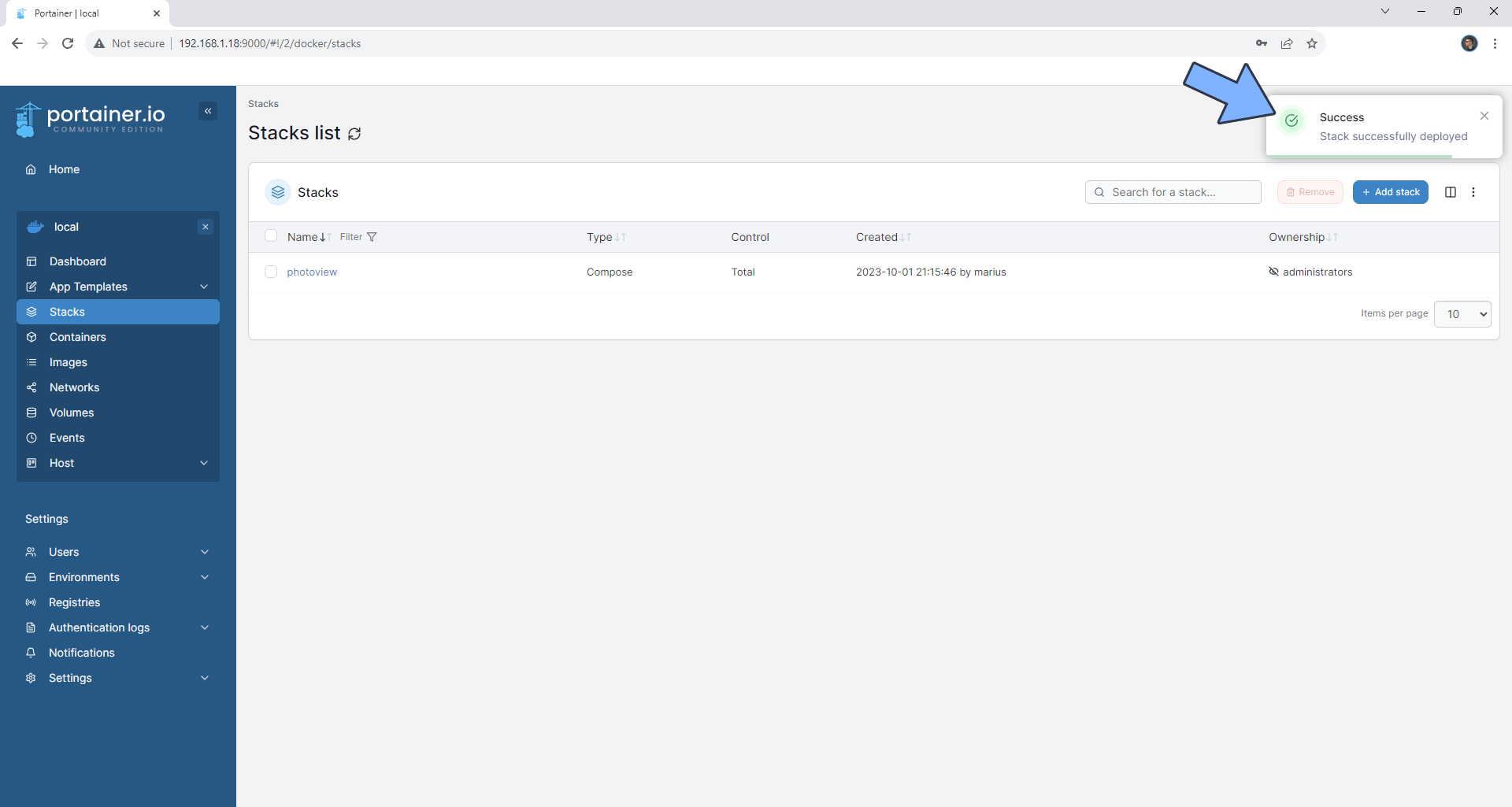
STEP 10
Go back to STEP 1 or you will deal with karma 🙂
STEP 11
The installation process can take up to a few seconds/minutes. It will depend on your Internet speed connection. Now open your browser and type in http://Synology-ip-address:7354 If everything goes right, you will see the Photoview setup page. Type in your own Username and Password. Type in /photos on the PHOTO PATH area, then click Setup Photoview. Follow the instructions in the image below.
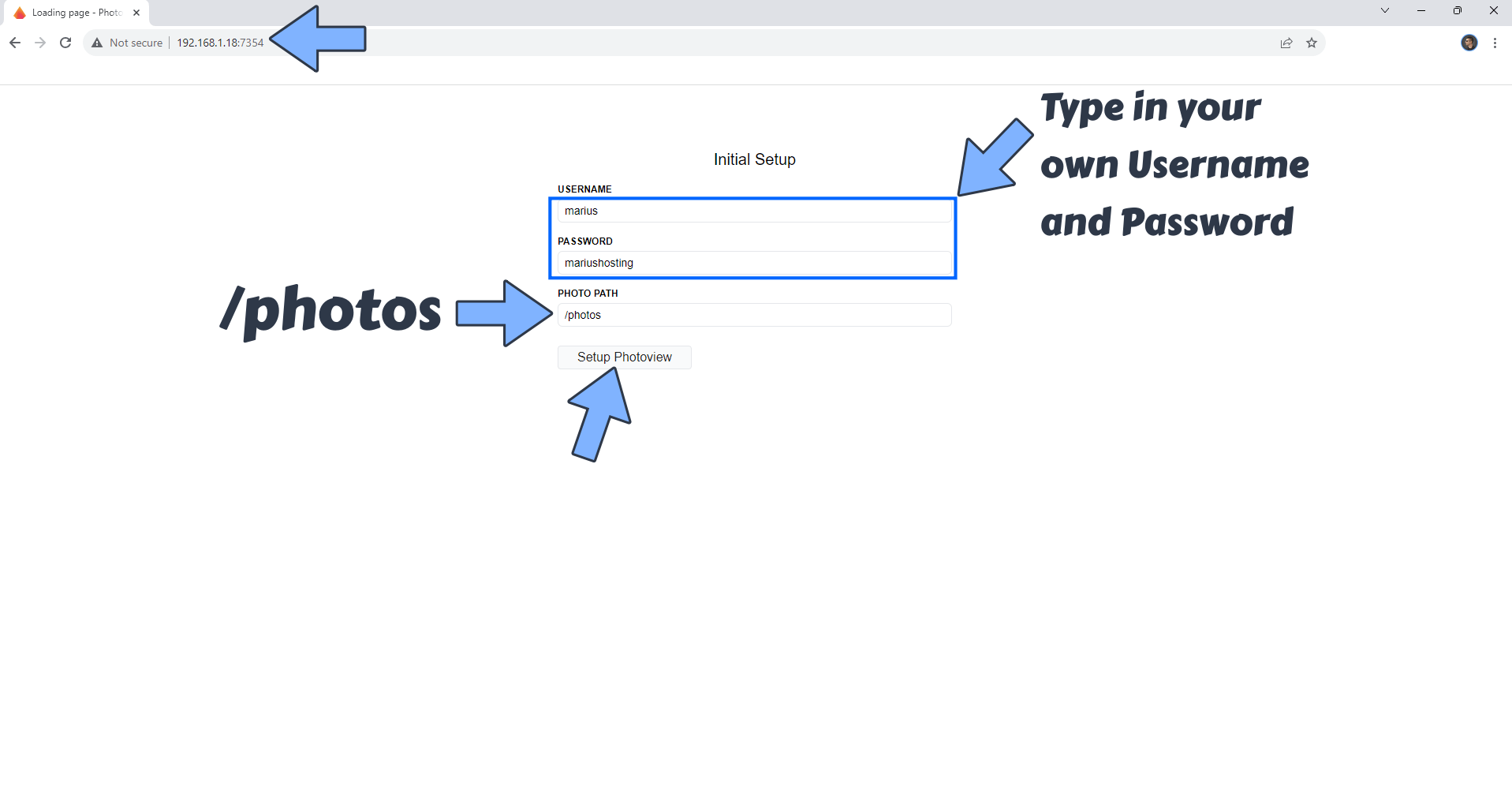
STEP 12
On the left sidebar click Settings. Select the website language. Change the theme to Dark mode then click Scan to scan your library. Follow the instructions in the image below.
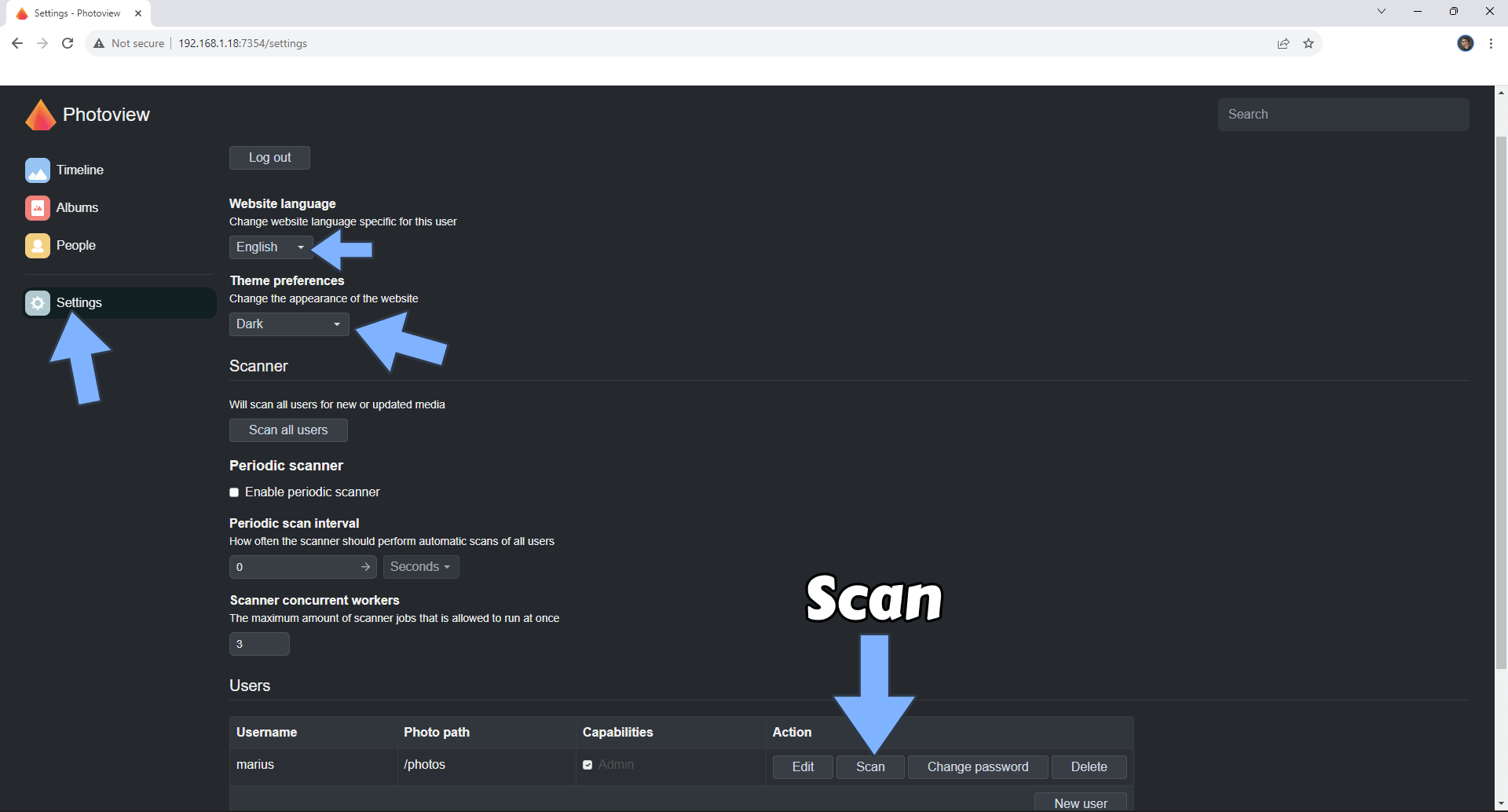
STEP 13
Depending on how many photos or videos you have, it can take up to several hours or days to index all of them.
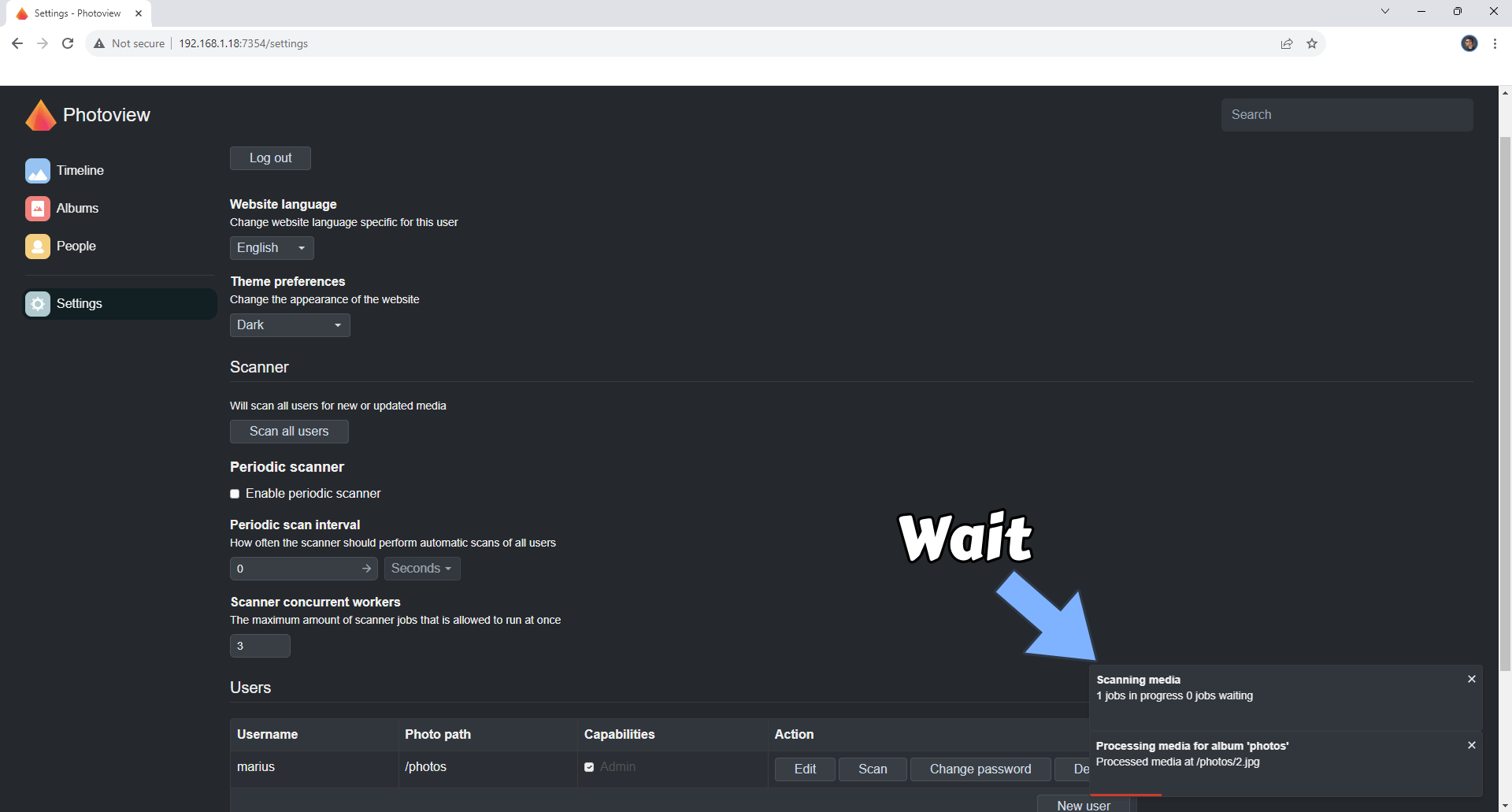
STEP 14
Once the scan is finished, click Album or Timeline on the left sidebar. Click on the photos album. Follow the instructions in the image below.
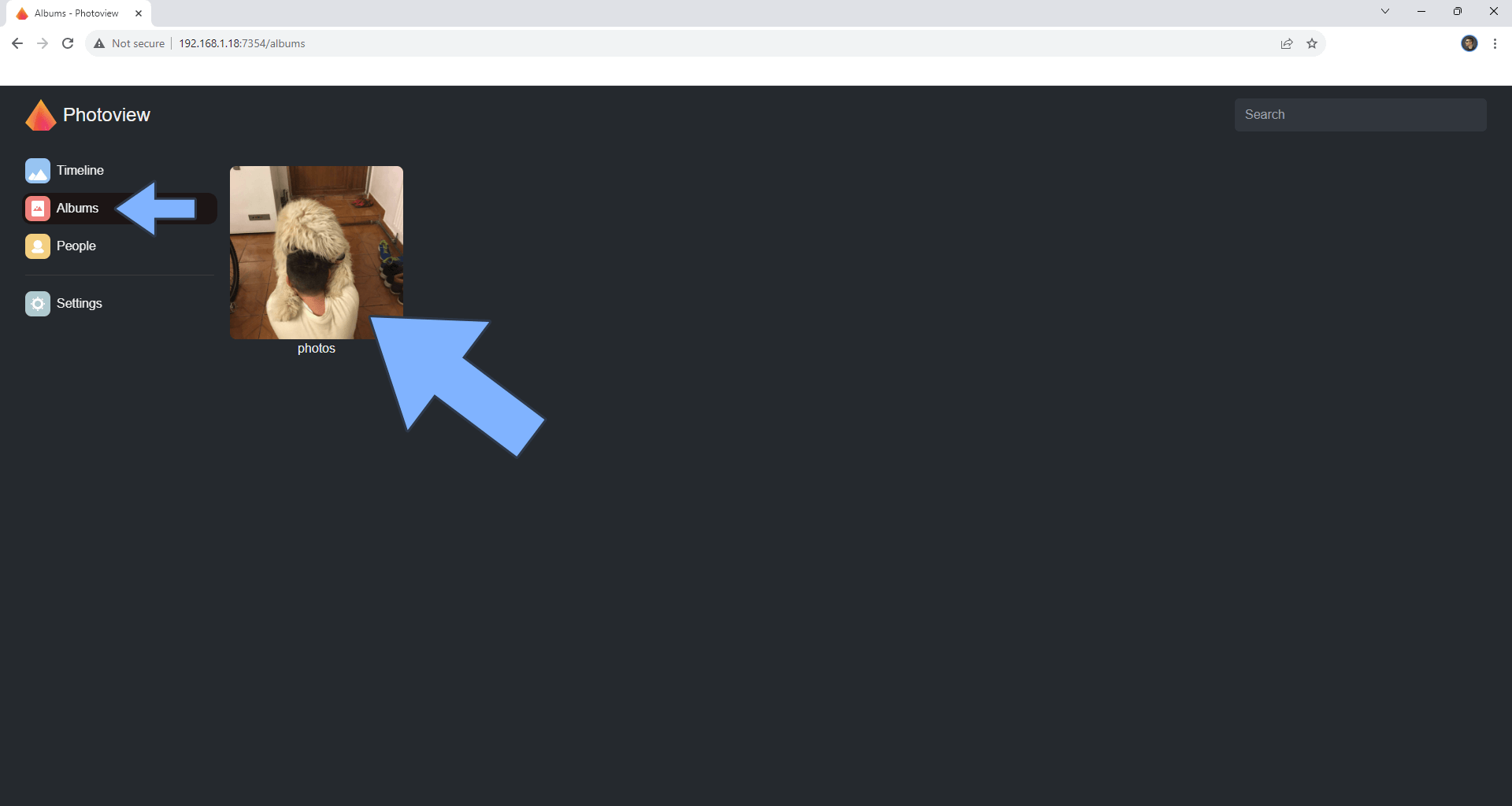
STEP 15
Your Photoview app at a glance!
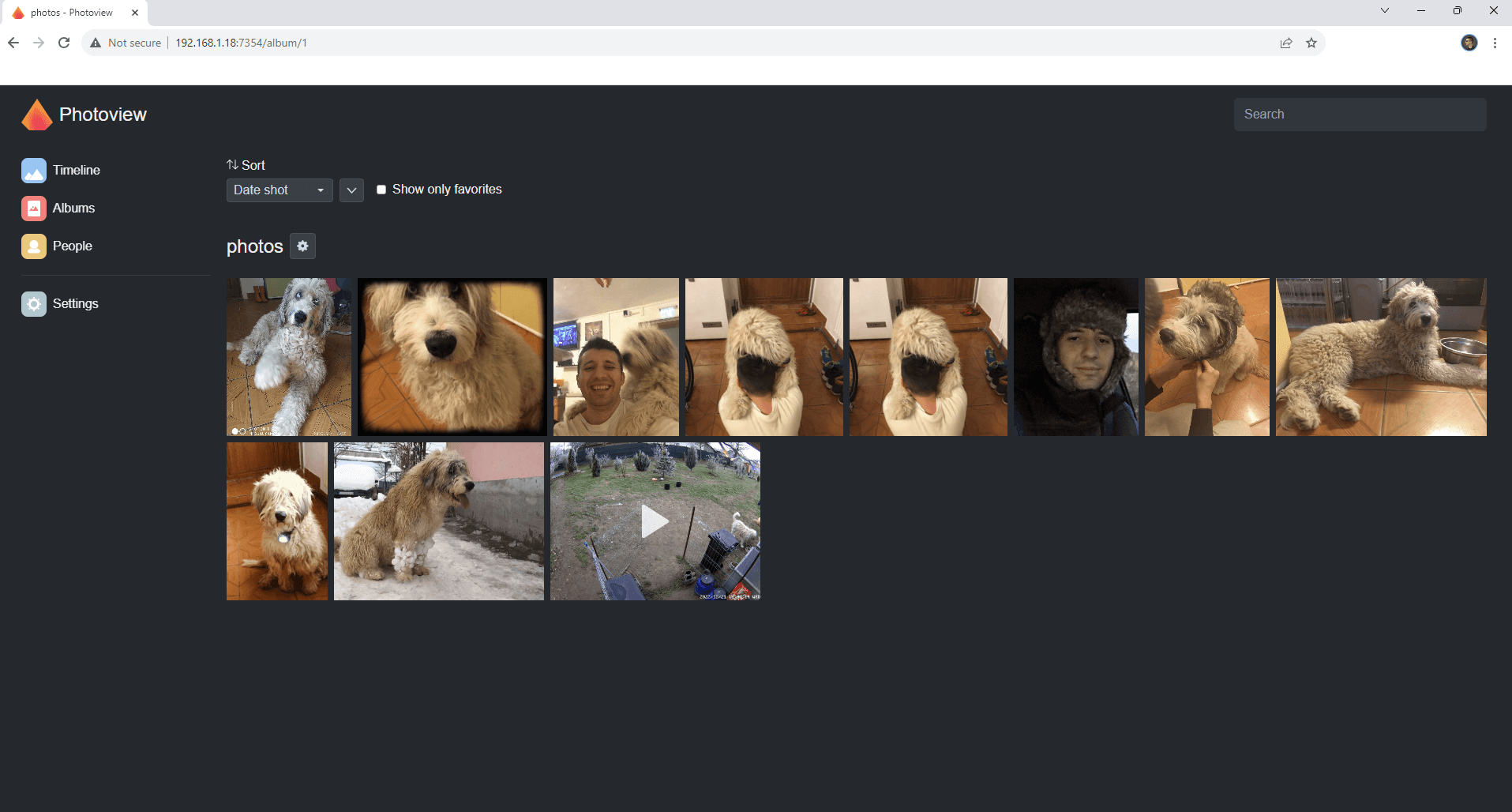
Enjoy Photoview!
If you encounter issues by using this container, make sure to check out the Common Docker issues article.
Note: If you want to run the Photoview container over HTTPS, check How to Run Docker Containers Over HTTPS. In order to make Photoview work via HTTPS, it’s mandatory to activate WebSocket.
Note: Can I run Docker on my Synology NAS? See the supported models.
Note: How to Back Up Docker Containers on your Synology NAS.
Note: Find out how to update the Photoview container with the latest image.
Note: How to Free Disk Space on Your NAS if You Run Docker.
Note: How to Schedule Start & Stop For Docker Containers.
Note: How to Activate Email Notifications.
Note: How to Add Access Control Profile on Your NAS.
Note: How to Change Docker Containers Restart Policy.
Note: How to Use Docker Containers With VPN.
Note: Convert Docker Run Into Docker Compose.
Note: How to Clean Docker.
Note: How to Clean Docker Automatically.
Note: Best Practices When Using Docker and DDNS.
Note: Some Docker Containers Need WebSocket.
Note: Find out the Best NAS Models For Docker.
Note: Activate Gmail SMTP For Docker Containers.
This post was updated on Friday / June 28th, 2024 at 10:17 PM
